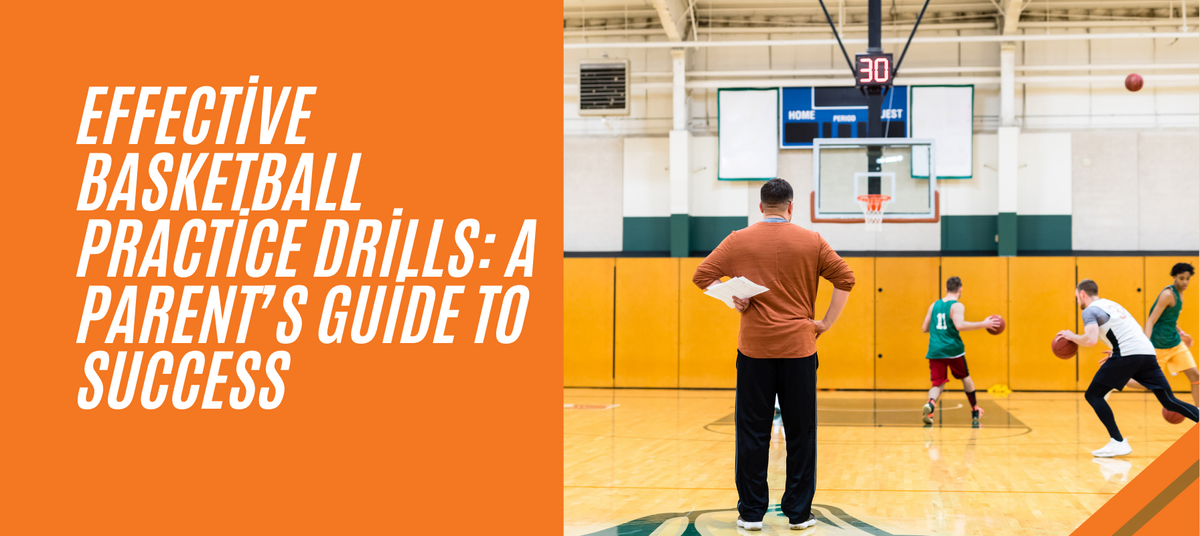
Effective Basketball Practice Drills: A Parent’s Guide to Success
|
|
Tempo di lettura 5 min
|
|
Tempo di lettura 5 min
As parents, we all want our young basketball players to succeed on the court. One of the most important parts of their success is having engaging basketball practice drills. But with so many drills out there, it can be tough to know where to start. Let's break down how to plan practices, keep young athletes excited, and build those fundamental basketball skills.
Before looking into specific basketball practice drills, it's helpful to have a solid practice plan. Think of it as the blueprint for maximizing learning and player development. Here's a simple framework:
Start with some light cardio, like jogging lines or jumping jacks, to get the blood flowing. Follow that up with dynamic stretching like arm circles, leg swings, and high knees to prep those muscles for action. Avoid static stretching, like holding a hamstring stretch, before practice, because it can actually decrease performance.
This is where you hone in on core skills like dribbling drills, passing drills, and shooting drills. Try weaving these skills into fun, competitive games instead of just drills. This helps players develop game-sense, think quickly on their feet, and stay motivated while practicing important basketball skills.
This could be scrimmaging, working on offensive plays, or practicing defensive sets. Remember to adjust to your players' skill levels and adapt as needed. A great way to reinforce good habits during scrimmage is implementing “Reward the Right”. For example, award a point if a team makes three consecutive passes. This encourages more passing and less dribbling during scrimmages.
End with static stretching to improve flexibility and reduce muscle soreness. This gives young athletes a chance to catch their breath and reflect on the key takeaways from the practice session while working on their flexibility.
Here’s a breakdown of some of the most effective basketball drills, categorized by skill area:
This drill enhances dribbling, hand speed, and coordination. Place cones in a line, having players dribble down and back, touching each cone with both hands.
A classic game for developing ball handling and listening skills. The coach yells, “Green Light.” and players dribble towards them. “Red Light.” means freeze—emphasize keeping that dribble going even while stationary.
Have players pair up facing each other and practice different passes: chest passes, bounce passes, and overhead passes. This basic passing drill is great for refining form and accuracy.
This drill encourages movement, communication, and quick passing. Players form a line and pass the ball down the court in a weaving pattern. Players should run without the ball to get open for a return pass. It mimics game situations effectively.
A staple for a reason—this drill helps players perfect their form shooting. Stand close to the basket and have players practice their shot form without jumping, aiming for a soft touch off the backboard. Gradually increase distance as they improve.
This is a great drill for incorporating friendly competition. Players take shots from different spots around the key, progressing to the next spot only after making a shot.
This drill develops defensive fundamentals like stance and staying in front of your opponent. Two players face each other—one with the ball. The defender mirrors the ball-handler's movements, focusing on lateral quickness.
This drill teaches defensive positioning and rotations. Players form a defensive “shell” around the key. The coach passes the ball, and the defenders move in unison, communicating to cover their positions and prevent open shots.
This drill teaches the importance of boxing out after a shot. Pair players up near the basket, with one acting as shooter and the other as rebounder. The rebounder works on securing position, keeping their body between the basket and the “opponent,” to snag the rebound.
This drill combines rebounding drills with quick decision-making. A coach shoots the ball, and the players sprint for the rebound. The first player to grab it makes a quick outlet pass to a designated player, simulating a fast break opportunity.
When working with young basketball players, remember to keep drills fun, fast-paced, and easily digestible. Younger players might struggle with the intricacies of a zone defense but excel in a game like 'Sharks and Minnows', which uses basic dribbling. Here are some additional tips for younger age groups:
Aim for at least 2-3 times per week, focusing on both individual skills and team play. Remember, consistency is key when working on basketball skills. Practice doesn't have to be on the court either, practicing drills at home will also enhance the skills of young players.
There are numerous drills you can work on at home, like: dribbling around cones or obstacles, practicing shooting form with a mini hoop, wall passing to work on hand-eye coordination, or even just watching game film together and discussing strategy.
Designing good basketball practice drills involves more than just running through the motions—it’s about understanding how young players learn and what will engage them on a deeper level. By prioritizing the right structure, focusing on core fundamentals, incorporating creativity and a touch of competitive spirit, parents and coaches can unlock their players’ potential, turning practice time into a journey of skill-building and enjoyment of this fantastic sport.
Basketball Practice Drills. Basketball Practice Drills. Basketball Practice Drills. Basketball Practice Drills. Basketball Practice Drills. Basketball Practice Drills. Basketball Practice Drills. Basketball Practice Drills. Basketball Practice Drills. Basketball Practice Drills. Basketball Practice Drills. Basketball Practice Drills. Basketball Practice Drills. Basketball Practice Drills. Basketball Practice Drills. Basketball Practice Drills. Basketball Practice Drills. Basketball Practice Drills. Basketball Practice Drills. Basketball Practice Drills. Basketball Practice Drills. Basketball Practice Drills. Basketball Practice Drills. Basketball Practice Drills. Basketball Practice Drills. Basketball Practice Drills. Basketball Practice Drills. Basketball Practice Drills. Basketball Practice Drills. Basketball Practice Drills. Basketball Practice Drills.
This site requires cookies in order to provide all of its functionality.
